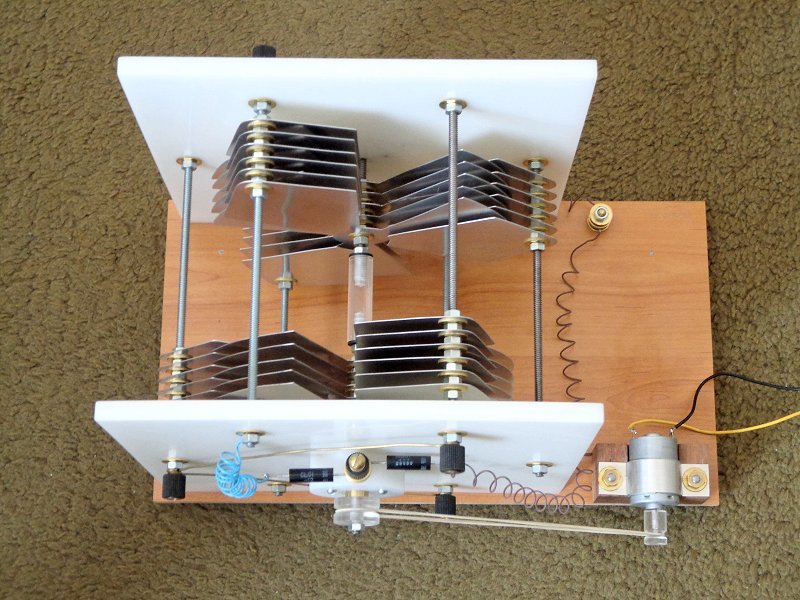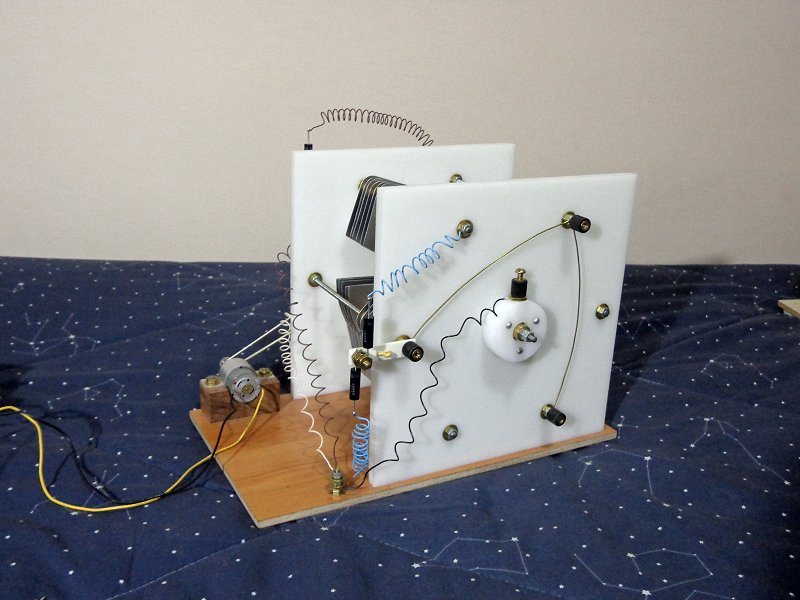
Electronic
Wilson's machine

Top
view, without the load capacitors
This machine requires a capacitance variation greater than 2:1 for operation, and can produce a voltage multiplication factor of up to 2.618 per cycle (1/3 of a turn), ideally, for large capacitance variation. The device varies the capacitances between 60 pF and 360 pF. It self-excites easily from external electrical interferences, and sparks at the variable capacitors when the terminal voltages reach about 3 kV. The two outputs over the load capacitances are symmetrical, positive and negative. The variable capacitors can also be rotated synchronously by readjusting the rotor, rotating it by 60 degrees, and then the machine operates as in the device shown in [1], with a smaller voltage multiplication factor, limited at 2.
Unipolar symmetrical generator
A curious variation of this machine, observed in December 2015, is obtained by connecting it in this alternative way. The fixed capacitors (330 pF, 3 kV) and variable capacitors are interchanged, with the variable capacitors grounded (at the rotor in the photo). Two of the diodes are inverted. The machine works in an unusual way for an electrostatic generator, producing two outputs with identical polarities, over the variable capacitors. For the diodes as shows, the outputs are positive. With the diodes inverted, negative.

Unipolar
generator